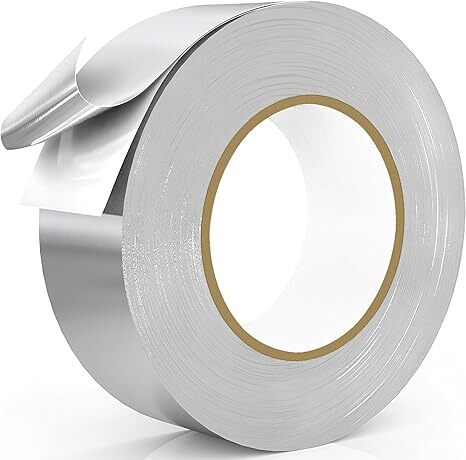Surface protection film is a thin layer of material used to protect the surfaces of various items from damage, scratches, pollution, or other external factors. It is typically made from materials like polyethylene (PE), polypropylene (PP), polyester (PET), etc., and features an adhesive layer that allows it to easily adhere to the surface that needs protection. With advancements in technology, the types and uses of protection films have expanded, covering a wide range of fields from home renovation to industrial production.
The Function of Surface Protection Films
The primary function of surface protection films is to prevent damage to objects during transportation, storage, installation, and construction. By providing a protective barrier for the surface, the film helps avoid scratches, dust, oil stains, chemicals, and other damages. Additionally, protection films are typically removable, leaving no adhesive residue, which is one of the reasons they are widely used.
Surface protection films not only effectively prevent external damage but also reduce cleaning and maintenance work. In many high-end product manufacturing and transportation processes, the surface protection film acts as an indispensable “invisible guardian.”
Common Types of Surface Protection Films
- PE Protection Film (Polyethylene Protection Film)
- Features: PE protection film is one of the most commonly used types of surface protection film. It offers good flexibility and transparency, and is often used to protect delicate surfaces such as glass, aluminum alloy, and plastic. PE films have moderate adhesive properties, making them easy to apply to surfaces, and they do not leave adhesive residue upon removal.
- Application Areas: It is widely used in construction materials, home appliances, glass, and electronics. For example, during home renovations, it is used to protect windows, aluminum doors and windows, etc., and during the transportation of appliances to prevent damage to the exterior.
- Window Protection Film
- Features: Window protection films are usually transparent and have strong UV resistance and scratch resistance. They can protect glass surfaces during construction and prevent pollution from dust, paint, and other contaminants.
- Application Areas: These films are mainly used in the construction and glass processing industries. For instance, during the construction of new buildings or renovations, workers use window protection films to prevent dust, paint, or other chemicals from staining window surfaces.
- Carpet Protection Film
- Features: Carpet protection films are typically made of high-quality plastic films and are designed to be waterproof, stain-resistant, and wear-resistant. They effectively prevent liquids, oil stains, or dust from penetrating into the carpet, while also reducing the impact of heavy objects on the carpet surface.
- Application Areas: Commonly used in home renovations and commercial renovations. Carpet protection films are especially useful during carpet cleaning, moving, or construction work to avoid damage or contamination.
- Industrial Protection Films (PET Protection Film, PVC Protection Film, etc.)
- Features: Industrial protection films are generally made from high-strength materials that offer superior resistance to heat, chemical corrosion, and tensile forces. These films not only protect surfaces from damage but also provide extra protection against chemicals or high temperatures that could harm equipment.
- Application Areas: These films are mainly used in the production and transportation of electronic components, metals, and plastic products. For example, they are used in the packaging of electronic components or in the transportation of metal sheets.
- Automotive Protection Film
- Features: Automotive protection films are designed specifically to protect the exterior of vehicles. They can prevent scratches on the paintwork and shield the car from tree sap, bird droppings, oil stains, and other contaminants.
- Application Areas: These films are used to protect car exteriors, headlights, side mirrors, and other parts of the vehicle, particularly during transportation or for new car installations.
Application Areas of Surface Protection Films
- Construction and Renovation
- In the construction industry, the application of protection films is widespread, especially for walls, floors, and windows. For example, during construction, to prevent cement, paint, and other materials from dirtying already installed windows or floors, protection films are often used. This not only ensures smooth construction but also reduces the cleaning workload afterward.
- Home Renovation
- In home renovation, surface protection films play a key role. During renovation work, surfaces like floors, furniture, windows, and kitchen countertops are susceptible to scratches or contamination, and protection films help avoid these issues. For example, when installing new flooring, protection films are laid down to prevent dirt and paint stains.
- Electronics and Appliances Industry
- In the electronics and appliances industry, protection films are essential, especially during transportation and packaging. They prevent scratches or pollution on screens, outer shells, and other delicate components during the shipping process. Protection films are commonly found in the packaging of mobile phones, televisions, and other electronic products.
- Industrial Production and Logistics
- In industrial production and logistics, the use of protection films is crucial. They are widely used in the transportation of metal sheets, plastic products, glass, and other bulk items to prevent surface damage like scratches, indentations, or corrosion during transit.
Conclusion
Surface protection films provide an essential barrier to protect the surfaces of objects from external damage. They are widely used in a variety of fields, from construction and home renovation to industrial production. Whether in construction sites, transportation, or product storage, surface protection films are an indispensable tool. Understanding the different types of protection films and their applications can help consumers make more informed decisions and effectively extend the lifespan of their items.
Read our related blog – Types and Applications of Industrial Adhesive Tapes. For regular updates, follow us on LinkedIn.






